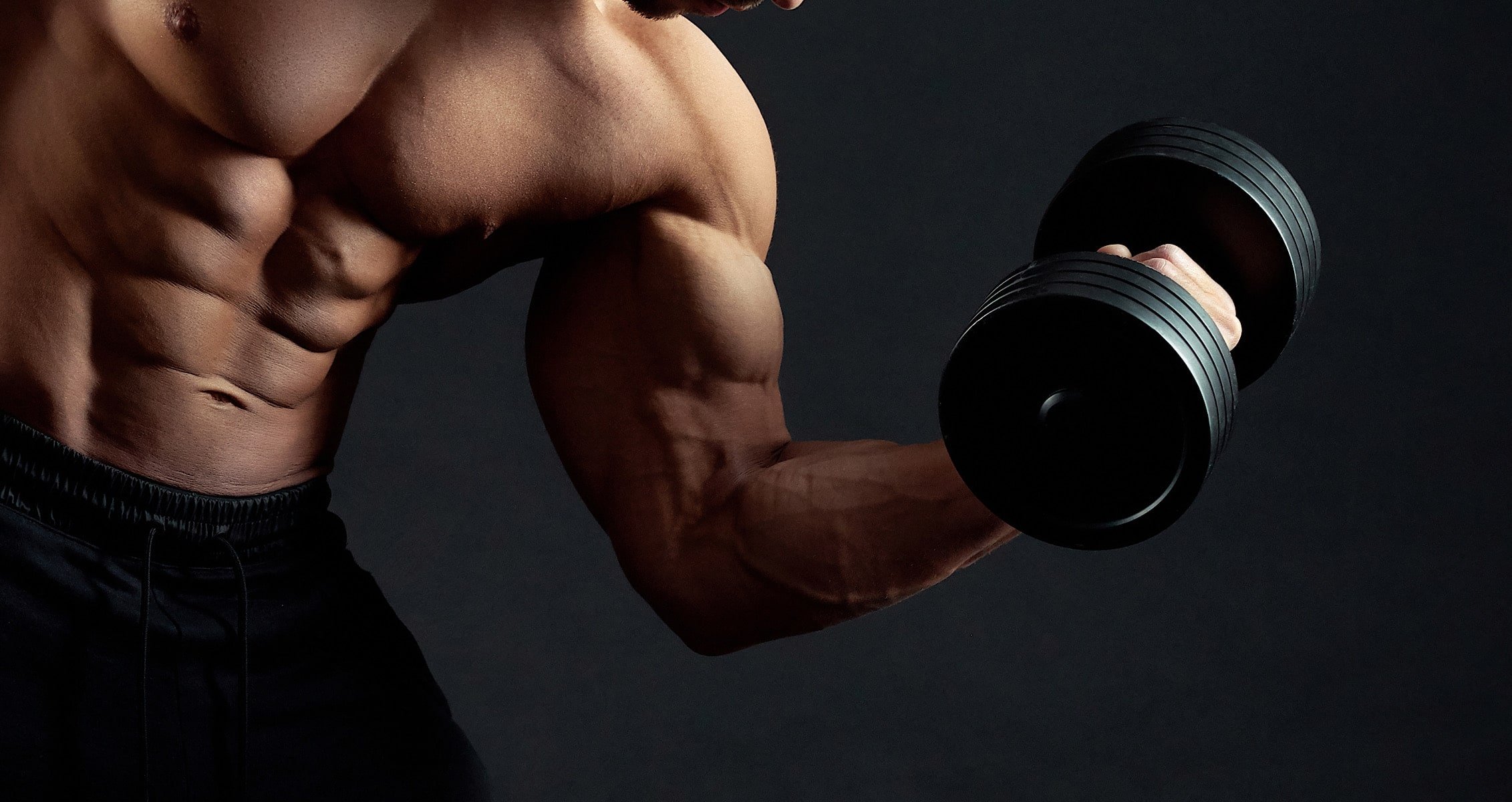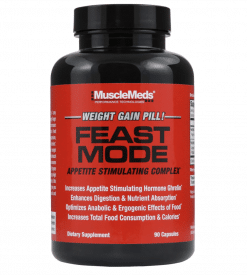Bulking Fundamentals for muscle growth
There’s a trend to frown upon bulking, as it is often described as a fast pass to accumulating too much body fat. In reality, people who think bulking is overrated more than likely do not even go to the gym, and therefore do not understand what it takes to acquire strength and muscle mass. It is not an easy process to progress in these fields, so bulking phases are what many will turn to.
Lean bulking can be extremely beneficial and provide an advantage to building quality muscle, without too much body fat. However, for females in particular, it sends chills down their spine. It sounds like you’re getting fat, blocky, or as the word describes, bulky.
But proper bulking doesn’t have to be like this. In fact, I hate the distinction between dirty and lean bulking in the industry. All bulking should be done to maximize muscle gain while minimizing fat gain. I thought this was obvious, but I guess not.
Why Bulking is Beneficial
The best physiques look good for a number of reasons, but one of the most important is absolute muscle mass. Anyone can get lean, but not everyone has the dedication and patience to accumulate robust muscle tissue that will pop when you are low in body fat percentage.
Endless dieting and cardio will get you lean, but if there’s no muscle worth revealing, you simply look flat, skinny, and dimensionless. In other words, people can’t differentiate your physique from a malnourished zombie.
To maximize muscle gain, you have to understand human physiology. Muscle is built when your body constructs more muscle proteins than it breaks down, so you get a net amount of muscle growth. This process requires building blocks and cost energy.
All else equal, the people who stand to build the most muscle are beginner trainees. They’re new to the muscle building stimulus and are far from their genetic limit. Furthermore, fat tissue provides energy to fuel the muscle building process. This is why some individuals can build muscle while eating in a caloric deficit. Even though they consume fewer calories than they burn off, they can construct new muscle tissue from the expense of the fat tissue they’re losing.
It sounds great, except you run into a couple issues if you’re a serious trainee. You will keep getting leaner and leaner until you no longer hold much fat tissue. Without a lot of fat tissue, you don’t have enough stored energy to pay for the energy needed to build muscle. In addition, you get more and more advanced, thus building muscle becomes slower and slower.
This is where bulking comes in. The surplus of calories provides an additional anabolic stimulus and provides sufficient energy for additional muscle tissue (1).
In other words, after a certain point you can’t recomp or maintain your way to a bigger physique. Sure, there may be some undetectable muscle growth, but if you want to get jacked and I’m talking detectable muscle growth where your muscles look like they ate the muscles of the average person. So, the idea that you have to eat big to get big has some sliver of truth.
For example, do you really think someone can get from 150 to 170 without bulking? If you eat the number of calories to stay at 150, you’ll stay at 150, even if you continue to try and train harder. This isn’t rocket science yet many people think they can stay lean, light, and in a deficit while their epic muscled up physique just falls from the sky one day.
Slowly Bulk
So while your weight and muscle goals may be ambitious, it’s important to go slow especially in advanced trainees who can only gain so much muscle. This means the surplus shouldn’t be too large.
Aiming for 1-2% of bodyweight gain per month is solid sweet spot.
So if you’re 150, you should aim for 1.5-3 pounds of total weight gain per month. Some of it will inevitably be fat, but that’s the nature of bulking even intelligent bulking because avoiding fat gain does more harm than good. If you aim to not gain fat, you’re at maintenance and you don’t move the needles towards actually building a physique.
In other words, don’t under eat because you might waste a whole month of not gaining any weight.
Strength Training During a Bulk
While the surplus of calories provide the calories, your exercise signals for how much muscle you’ll gain. This is why you have to strength train, and with the utmost intensity. Incorporating things like heavy compounds such as the squat, bench, and deadlift to build the foundation, as well as sets until muscular failure to really break down the muscles. Take a look at Mike Mentzer’s workout routine to really get a good idea of putting on mass.
With proper strength training, you will stimulate muscle growth. Ideally, you’d train as frequently as you can recover. Most people with a properly designed lifting program should be able to lift 4-5x per week. The frequency, volume, and exercise selection are all paramount to stimulating muscle growth, but the most important aspect is progressive overload meaning your performance has to improve.
If you can go from bench pressing 300 lbs for 12 to bench pressing 400 lbs for 12, you have to build muscle tissue to do so. So a stronger muscle is oftentimes a bigger muscle. This is the adaptation you want. If your training program doesn’t result in performance increases, it sucks and isn’t stimulating much muscle growth if any.
Cardio on a Bulk
Cardio is important for health and keeping the metabolism going, and some people find it enjoyable, but physiologically, it doesn’t contribute to the process of bulking and putting on mass. It doesn’t mean it causes muscle loss like some people exaggerate, but it shouldn’t take priority.
Like have you ever heard a Mr. Olympia winner say something like, “You know what got me massive? Cardio, that was the secret.”
That’s not how it works. So include cardio to keep your heart healthy, but only an amount to do just that. Your priorities are off if you intend to bulk while cardio volume dominates your week.
Macro Split
The big change with bulking is eating in a surplus which many people aren’t used to. A good starting point if you’re lean is to eat around 17-20x your bodyweight. You’ll have to adjust depending on weight gain progress. If you’re not gaining, you have to boost calories by about 100-200 calories.
Conversely, if you’re gaining too fast, cut back 100-200 calories because gaining excess fat gain simply makes recovery worse and prolongs your cut after the bulk.
As for your macros, you want to keep protein high. At least 0.8 grams per pound of bodyweight should be set as a minimum. You can even do 1 gram per pound of bodyweight to be extra safe, not to mention that’s simple.
Protein is responsible for preventing protein breakdown along with providing amino acids as building blocks which literally gets your slabs of meat thicker. This is the wonderful process we call hypertrophy if you want to flex your vocabulary a bit.
As for carbs/fat, they are less important in the sense that they’re not paramount to the process of bulking. They provide their own benefit, but optimizing them is simpler. Carbs provide fuel for training and fat keeps your testosterone high. You don’t need a crazy amount of each, so I generally recommend eating your carb/fat ratio up to your preference so long as you don’t go too low on either of them.
Here are some examples of perfectly acceptable macro splits for someone 160 pounds bulking on 2880 calories
Example 1 (even calories from carbs/fat):
Protein: 160
Carb: 280
Fat: 124
Example 2 (slightly more carbs):
Protein: 160
Carb: 375
Fat: 82
Example 3 (slightly more fat):
Protein: 160
Carb: 257
Fat: 134
Nutrition Choices
What’s arguably more important than the macro split is the food choices. People often think food quality is important for fat loss, but it’s just as important for building muscle. The healthier and more nourished you are, the more muscle you’ll build. This is why your food choices shouldn’t change a whole lot from a whole food diet. You should still eating plenty of foods like meat, seafood, vegetables, fruits, grains, legumes, etc.
You can throw in some nuts or fatty fruit like avocado too thanks to the flexibility. You should be able to fill up most of your nutrition with these minerals and can supplement with a quality multivitamin to complete a lean bulk. For example, zinc, magnesium, B vitamins, and vitamin D all play key role in performance, recovery, and muscle growth.
That being said, bulking can be difficult with high calorie targets especially skinny guys who struggle to eat. Your appetite can limit your ability to bulk, so adding in some calorically dense foods may be a game changer. Foods like pizza, peanut butter, fruit juice, fatty dairy, chocolate, or granola bars can help supplement your diet.
The Best Bulking Supplement
Now, as stated above, getting in proper nutrients is key. However, it may sometimes be difficult to continue to eat, as you may not be hungry or you may just be getting sick of eating the same foods. This is where certain supplements can help, and one supplement we love is MuscleMeds Feast Mode.
Feast Mode helps to stimulate your appetite, maximize your calorie absorption, and gain faster, making it the ultimate product for a bulk.
One serving is 3 capsules and within each bottle you get 30 servings all for the price $34.99.
Bulking Psychology
Bulking is great at first. You get more food flexibility and you’re never hungry. You have tons of energy at the gym and in some cases, your libido is higher due to not having to restrict calories.
However, psychological bulking benefits only last so long. Many people report struggling to eat as your appetite adapts. In addition, your physique can look temporarily worst because of the fat gain. Again, the goal is to minimize fat gain, but you can’t look amazing the whole time you’re bulking. If it was easy and you constantly look epic, everyone would do it.
So make sure you get your expectations right. This is not a permanent lifestyle change. You do this temporarily to maximize muscle growth and once you’re not very lean, you cut.
This is what we call the bulking/cutting cycles. They’re not overrated no matter how many politically correct fitness influencers say. These cycles are also not exclusive to bodybuilders. Anyone who physiologically can’t build much muscle anymore and need that surplus should be bulking and then obviously cutting once their bulk is over.
But you read this article because you’re concerned with bulking, so for now, buy plenty of protein/carbs/fat, eat up, stay consistent, and don’t lose heart. You got this.
Are you getting ready for the bulking season? Let us know in the comments below. Also, be sure to follow Generation Iron on Facebook, Twitter, and Instagram.
References












